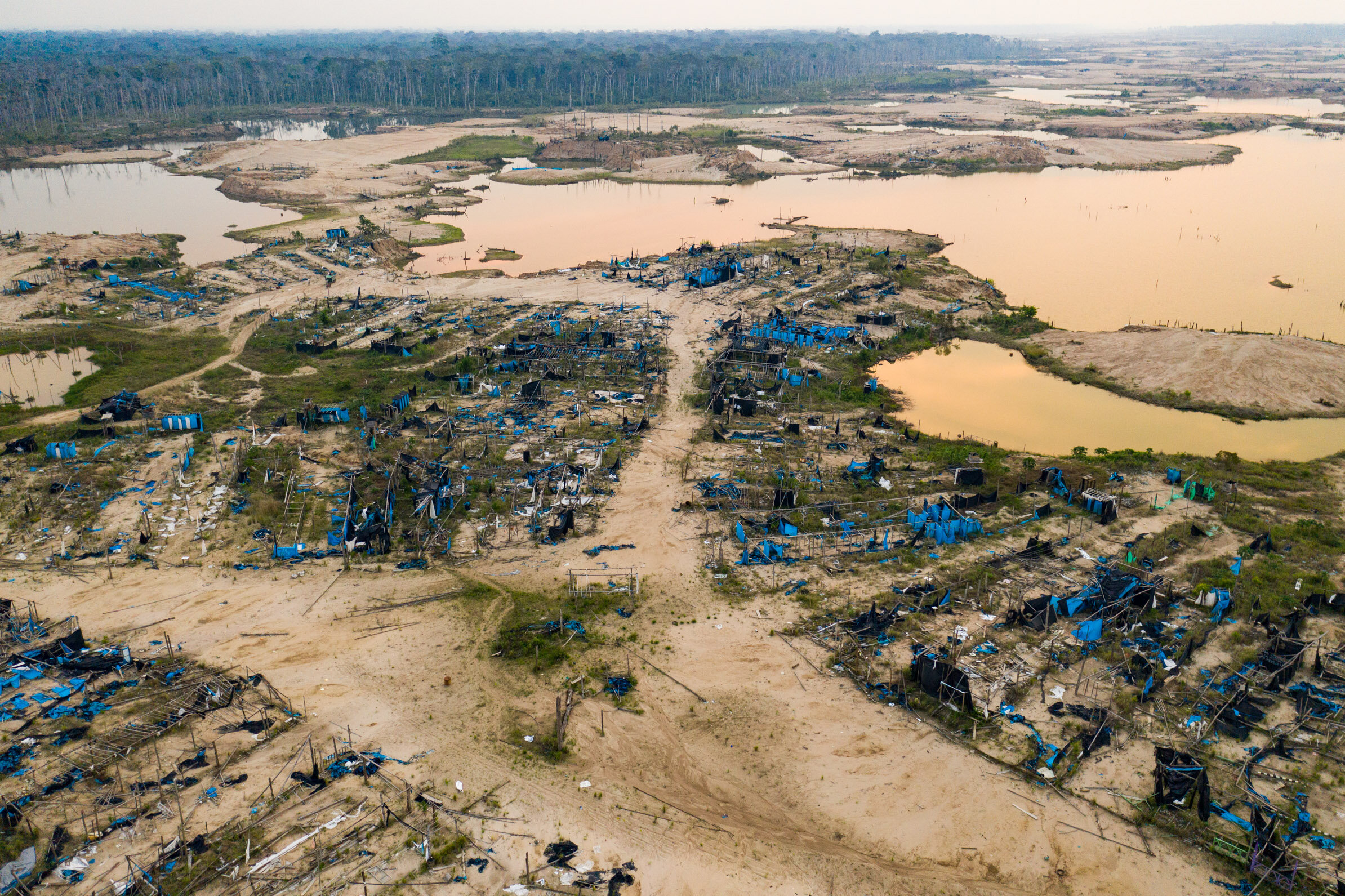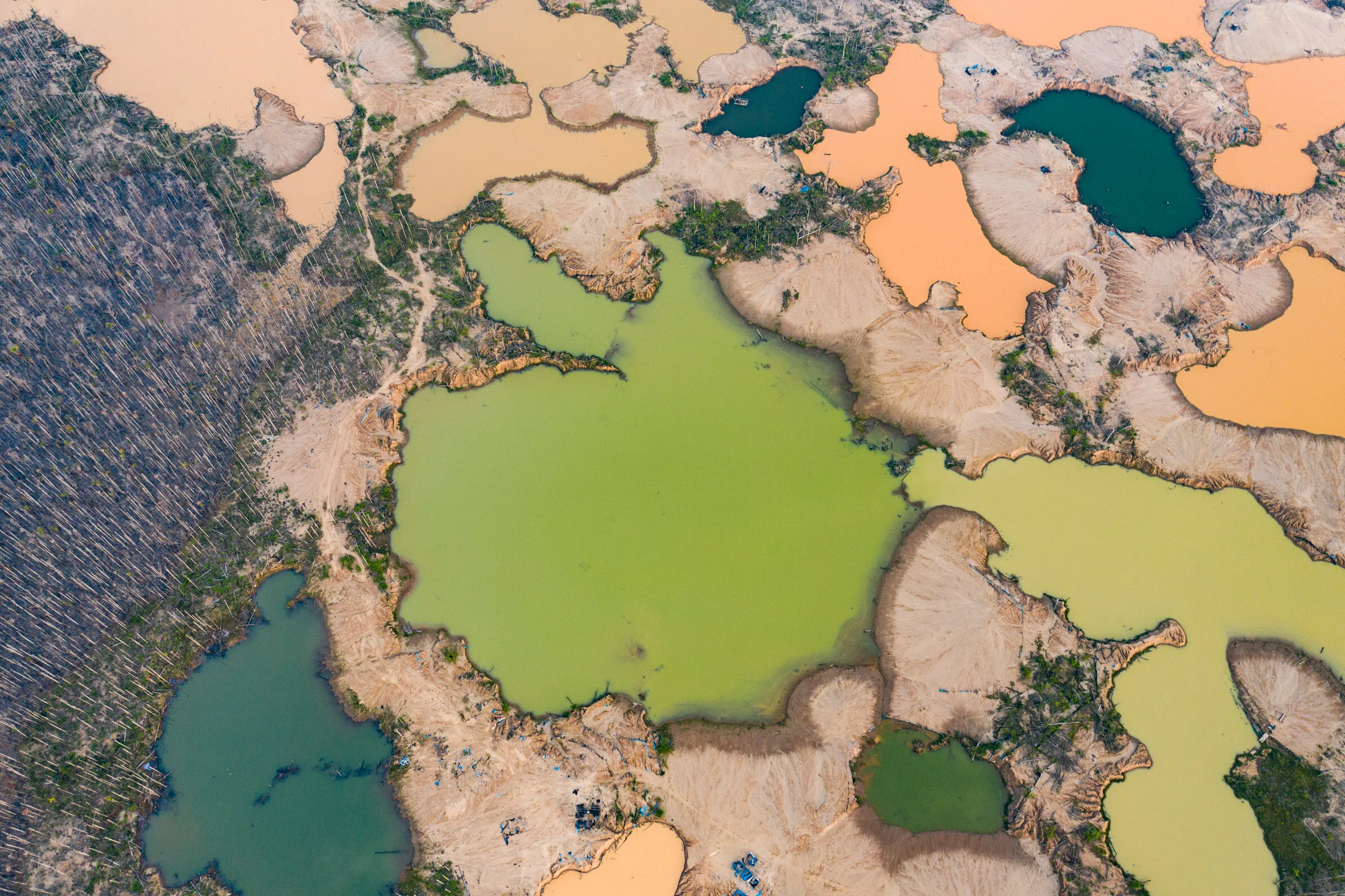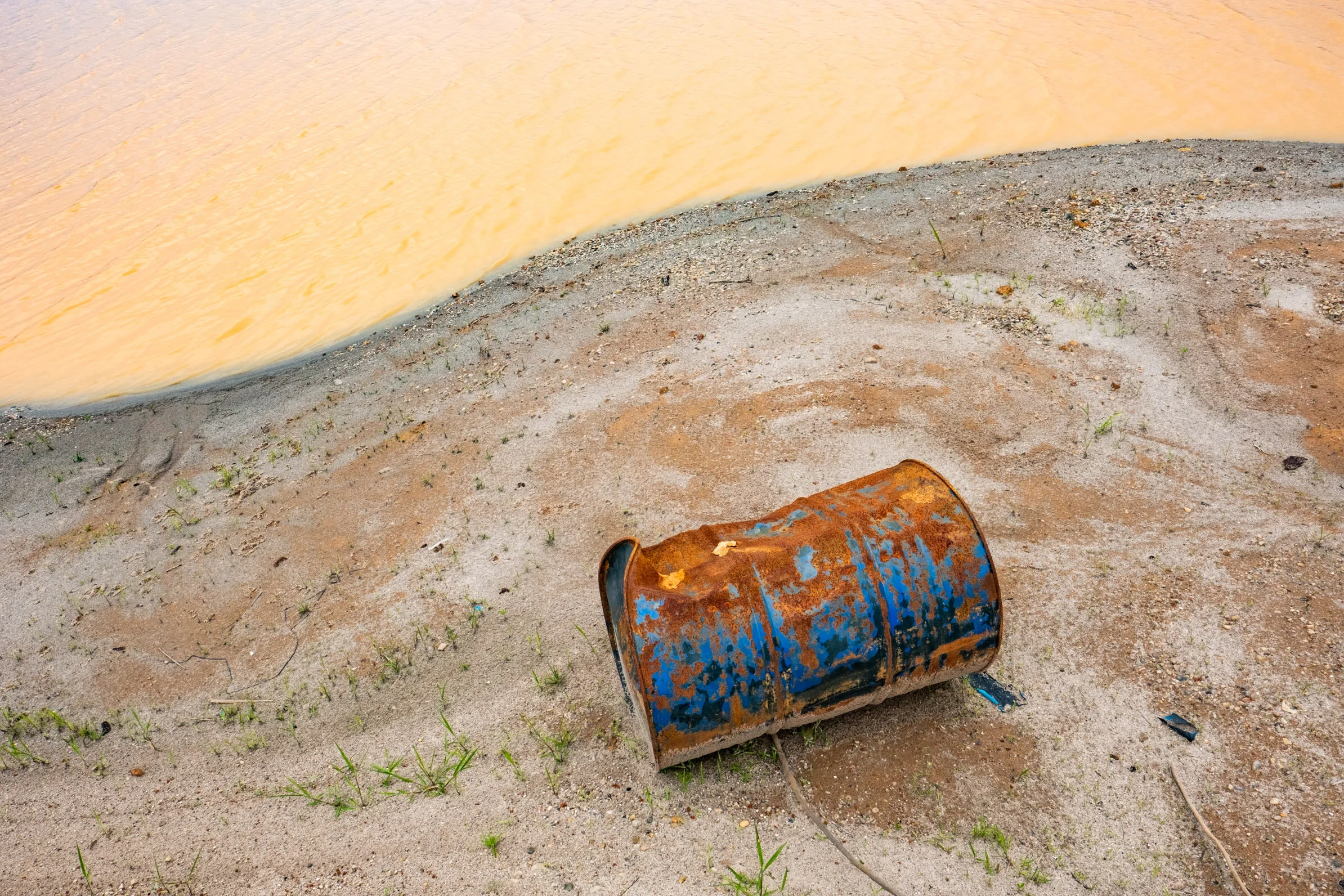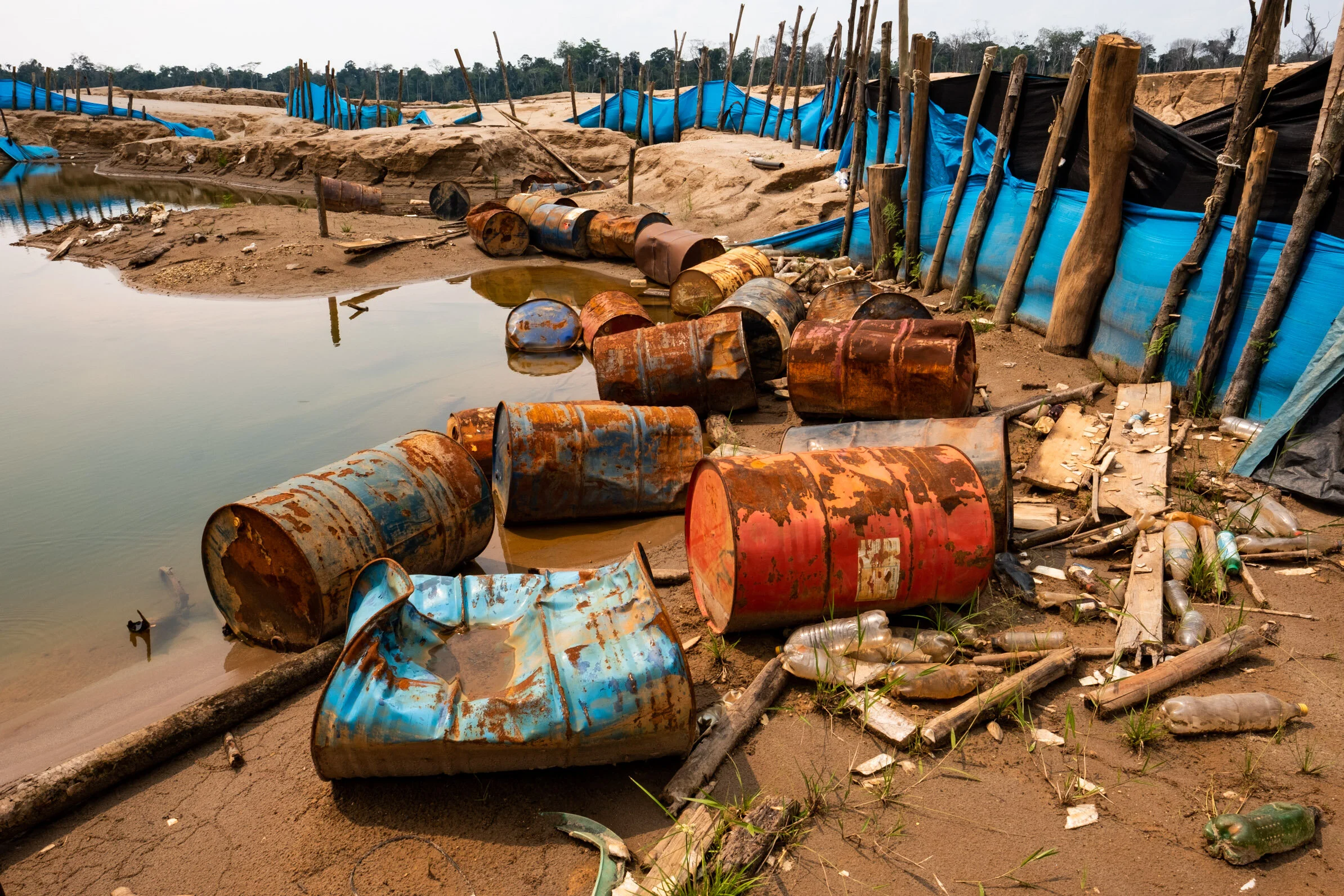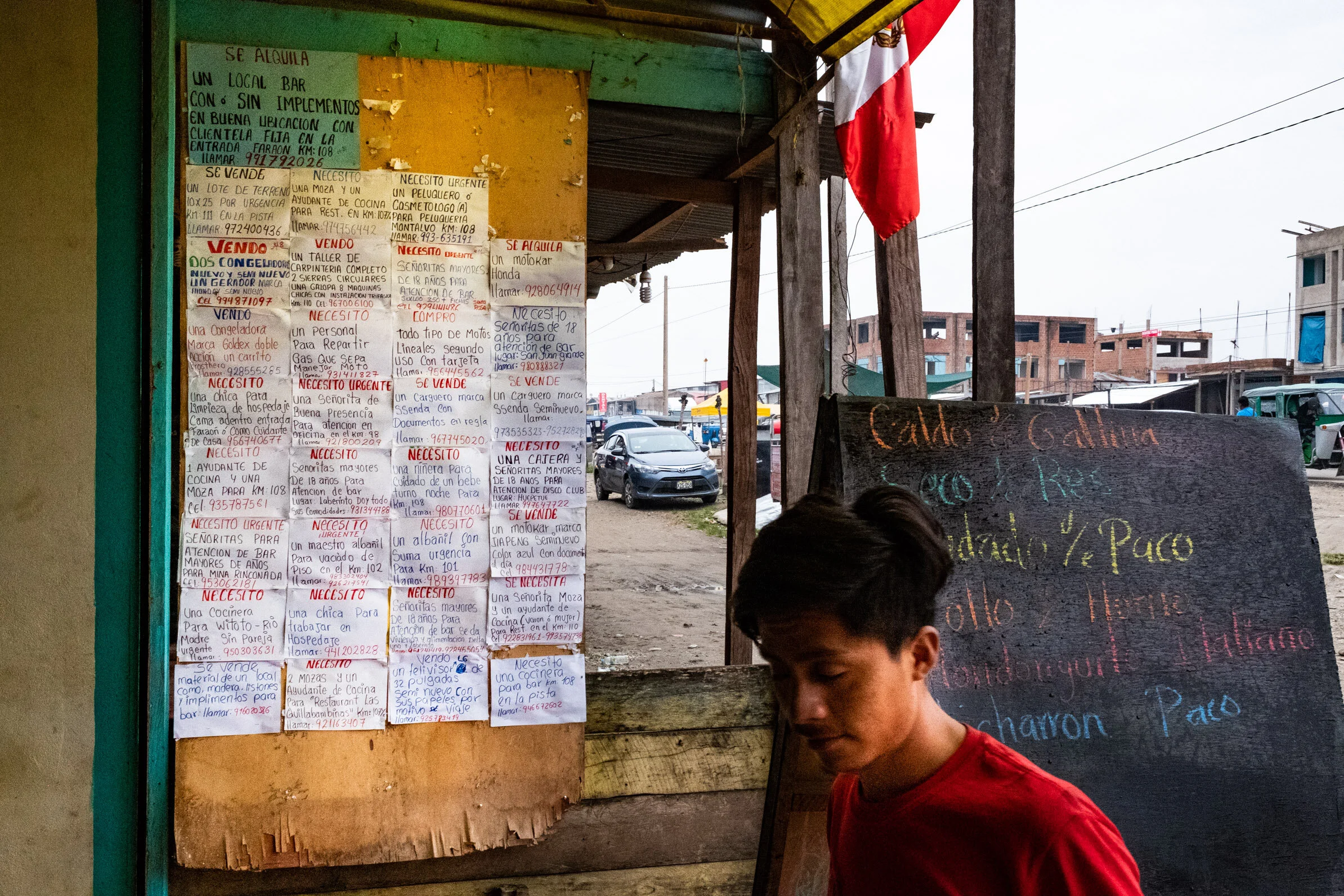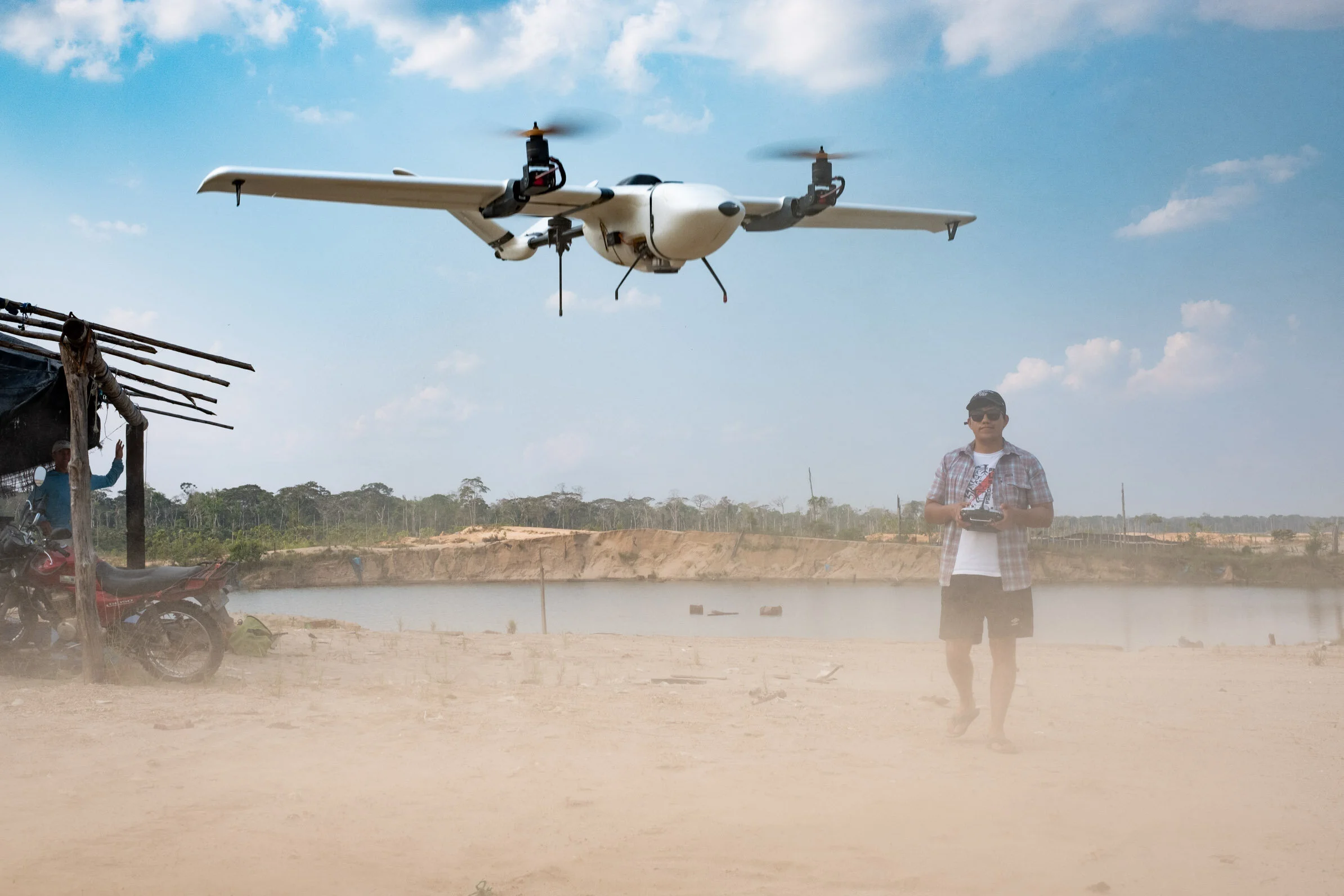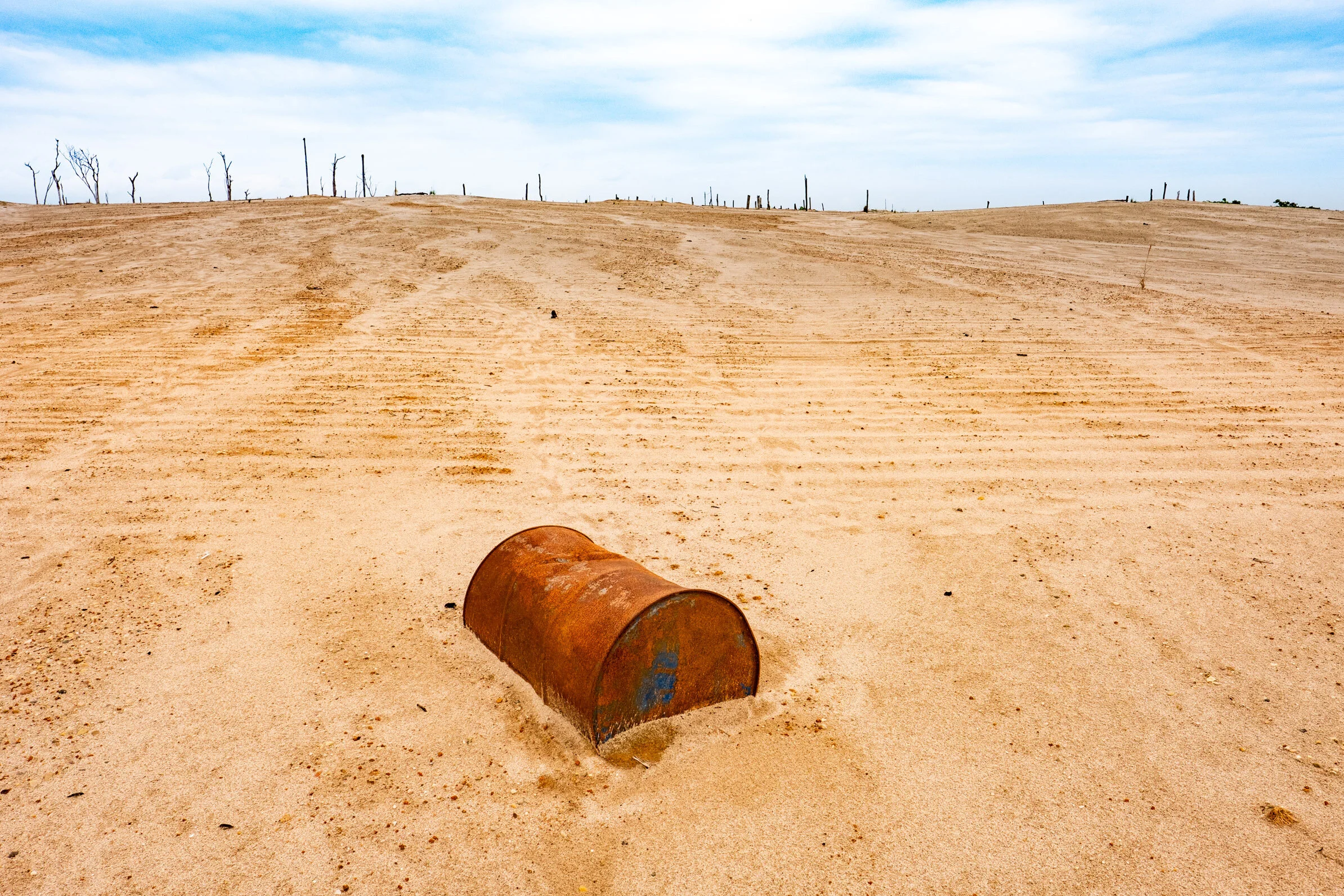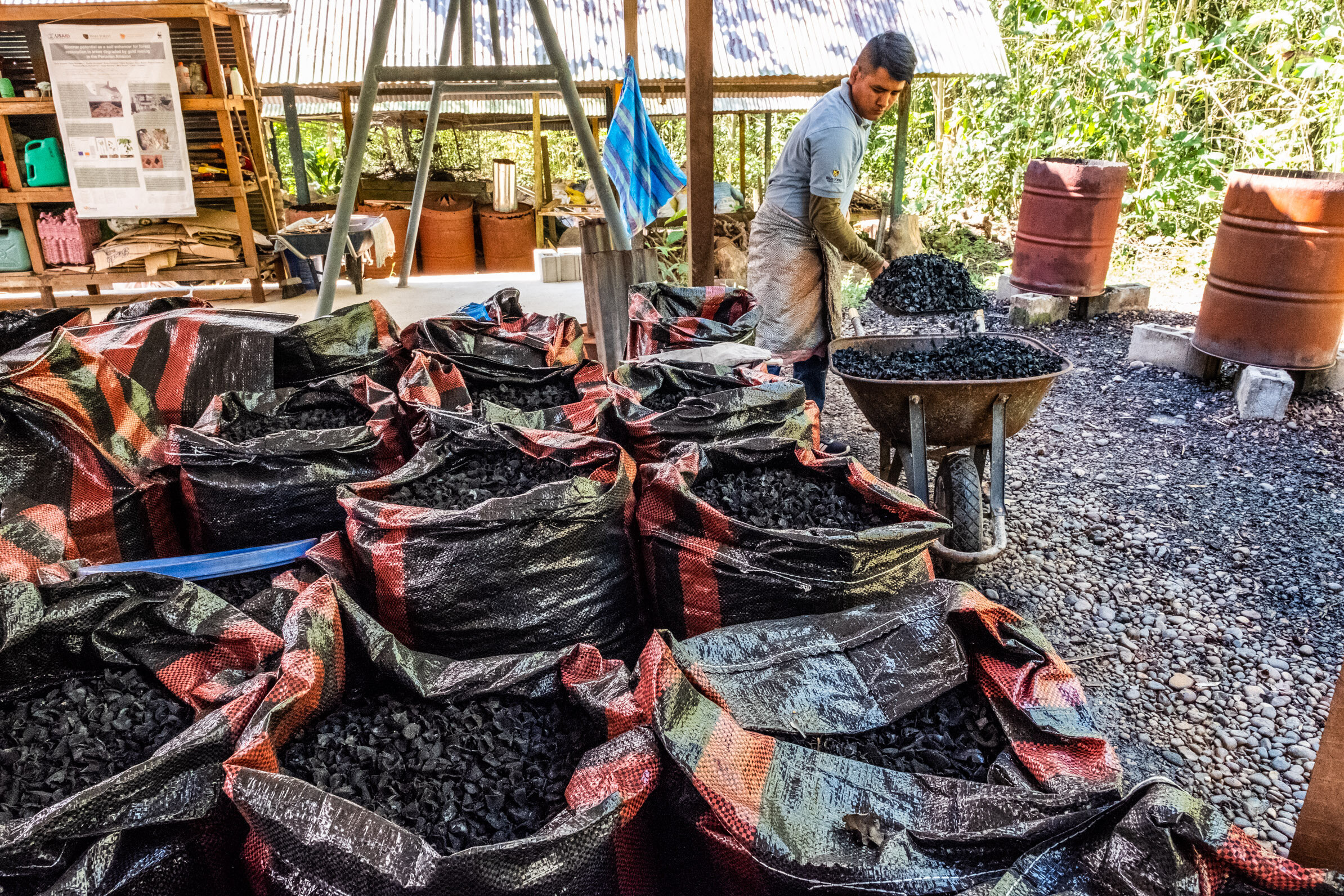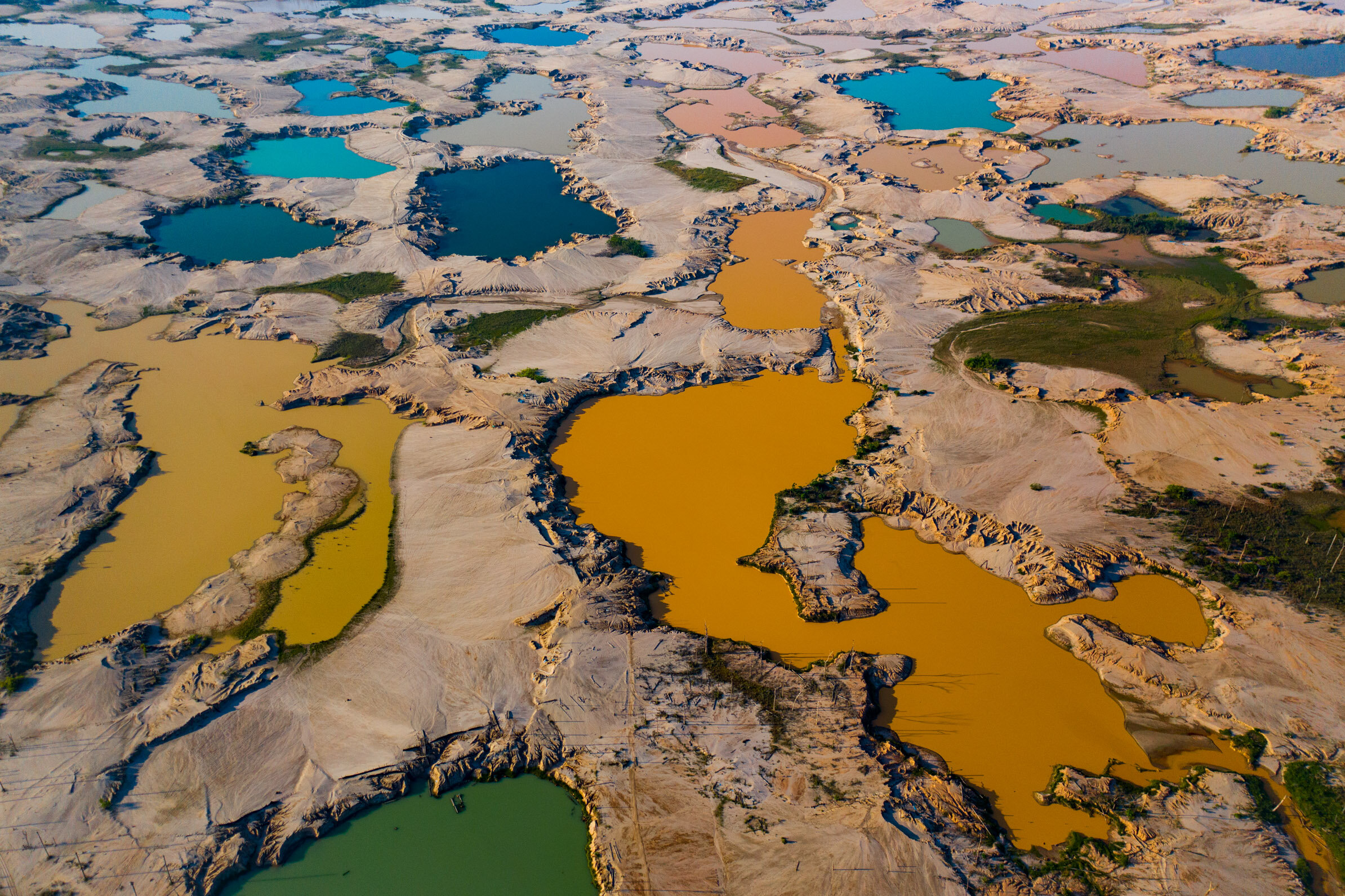
AMazonian Gold Mining: GRANT-FUNDED ONGOING PERSONAL & COLLABORATIVE PROJECT
In the aftermath of Peru's historic and unprecedented militarized crackdown on illegal alluvial gold mining in La Pampa, I have been examining what can and needs to be done for biodiversity conservation and climate crisis mitigation. Illegal, unofficial, and unregulated alluvial gold mining has dramatically devastated over 40,000 hectares—and significantly impacted the ecosystem for many more—of tropical rainforest in the biologically diverse and culturally rich Madre de Dios region of the Western Amazon. Centro de Innovación Científica Amazónica (CINCIA) is working with the Center for Energy, Environment, and Sustainability (CEES) at Wake Forest University to understand the extent of the environmental impact and how to mitigate and remediate it all, including an aggressive reforestation plan.
For a summary story on my most recent iLCP Redsecker Response Fund funded trip to La Pampa, click here.
Aerial drone photograph of La Pampa showing the extent of the deforestation impact from alluvial gold mining on the tropical forests of the Madre de Dios region.
Sluices, shelters, and other infrastructure destroyed by the military are part of the aftermath of illegal and unofficial alluvial gold mining after miners were forceably removed from the area, showing local pollution and the massive deforestation associated with the process. La Pampa, Madre de Dios, Peru. September 2019.
The town of Balata, set up to house miners and their families near the southeastern leading edge of the most recent deforestation for alluvial gold mining. The entire town of maybe 1500 people was destroyed by the Peruvian military and national police.
The aftermath of illegal and unofficial alluvial gold mining after miners were forceably removed from the La Pampa area, showing local pollution and the massive deforestation associated with the process.
The Peruvian National Police near their field base, Mega 12 shortly after Peru's February 2019 militarized crackdown on illegal and unofficial alluvial gold mining in the La Pampa region of Madre de Dios
Aerial drone photograph of La Pampa showing the extent of the deforestation impact from alluvial gold mining on the tropical forests of the Madre de Dios region.
The aftermath of illegal and unofficial alluvial gold mining after miners were forceably removed from the La Pampa area, showing local pollution and the massive deforestation associated with the process.
Aerial drone photograph of La Pampa showing the extent of the deforestation impact from alluvial gold mining on the tropical forests of the Madre de Dios region.
The aftermath of illegal and unofficial alluvial gold mining after miners were forceably removed from the La Pampa area, showing local pollution and the massive deforestation associated with the process.
The aftermath of illegal and unofficial alluvial gold mining after miners were forceably removed from the La Pampa area, showing local pollution and the massive deforestation associated with the process.
La Pampa sprang up as a squatters town when the Interoceanic Highway opened up access in the region to gold mining. At its height it was still unofficial, but home to maybe 25,000 people dependent on and/or supplying the local miners.
The Peruvian National Police near their field base, Mega 12 shortly after Peru's February 2019 militarized crackdown on illegal and unofficial alluvial gold mining in the La Pampa region of Madre de Dios
In the unofficial town of La Pampa, crime and illegal activities beyond illegal gold mining include prostitution, slavery, and human trafficking. Want ads like these are often used to lure in women in search of work to remote locations where they can be coerced or abducted into prostitution.
The CINCIA fixed-wing drone flown by Jorge Caballero Espejo, Drone and GIS Coordinator at CINCIA. Following Peru's February 2019 militarized crackdown on illegal and unofficial alluvial gold mining in the La Pampa region of Madre de Dios, Wake Forest University's Puerto Maldonado-based Centro de Innovación Científica Amazonia (CINCIA), a leading research institution for the development of technological innovation for biological conservation and environmental restoration in the Peruvian Amazon, is applying years of scientific research and technical experience related to understanding mercury contamination and managing Amazonian ecosystems.
Jorge Caballero Espejo, Drone and GIS Coordinator at CINCIA, (black hat) preparing flight plans for CINCIA's fixed-wing drone with Wake Forest University biology professor, Dr. Miles Silman. Following Peru's February 2019 militarized crackdown on illegal and unofficial alluvial gold mining in the La Pampa region of Madre de Dios, Wake Forest University's Puerto Maldonado-based Centro de Innovación Científica Amazonia (CINCIA), a leading research institution for the development of technological innovation for biological conservation and environmental restoration in the Peruvian Amazon, is applying years of scientific research and technical experience related to understanding mercury contamination and managing Amazonian ecosystems.
Jorge Caballero Espejo, Drone and GIS Coordinator at CINCIA, (black hat) preparing flight plans for CINCIA's fixed-wing drone with Wake Forest University biology professor, Dr. Miles Silman. Following Peru's February 2019 militarized crackdown on illegal and unofficial alluvial gold mining in the La Pampa region of Madre de Dios, Wake Forest University's Puerto Maldonado-based Centro de Innovación Científica Amazonia (CINCIA), a leading research institution for the development of technological innovation for biological conservation and environmental restoration in the Peruvian Amazon, is applying years of scientific research and technical experience related to understanding mercury contamination and managing Amazonian ecosystems.
Wake Forest University biology professor Dr. Miles Silman downloads images from CINCIA's fixed wing drone after a maping flight in La Pampa.
Trash piles act as mulch, holding water and protecting plants such as papaya, camote, peppers, and watermelon that grow from seeds discarded in food waste.
The aftermath of illegal and unofficial alluvial gold mining after miners were forceably removed from the La Pampa area, showing local pollution and the massive deforestation associated with the process.
Producing bio-carbon from Brazil nut shells at the CINCIA facility 20km southwest of Puerto Maldonado. Mining has deforested the landscape and degraded soil in vast areas in Madre de Dios and other surrounding Amazonian regions leading to soil deterioration, water quality losses, and a decrease in vegetation cover.
Producing bio-carbon from Brazil nut shells at the CINCIA facility 20km southwest of Puerto Maldonado. Mining has deforested the landscape and degraded soil in vast areas in Madre de Dios and other surrounding Amazonian regions leading to soil deterioration, water quality losses, and a decrease in vegetation cover.
Producing bio-carbon from Brazil nut shells at the CINCIA facility 20km southwest of Puerto Maldonado. Mining has deforested the landscape and degraded soil in vast areas in Madre de Dios and other surrounding Amazonian regions leading to soil deterioration, water quality losses, and a decrease in vegetation cover.
Producing bio-carbon from Brazil nut shells at the CINCIA facility 20km southwest of Puerto Maldonado. Mining has deforested the landscape and degraded soil in vast areas in Madre de Dios and other surrounding Amazonian regions leading to soil deterioration, water quality losses, and a decrease in vegetation cover.
Producing bio-carbon from Brazil nut shells at the CINCIA facility 20km southwest of Puerto Maldonado. Mining has deforested the landscape and degraded soil in vast areas in Madre de Dios and other surrounding Amazonian regions leading to soil deterioration, water quality losses, and a decrease in vegetation cover.



